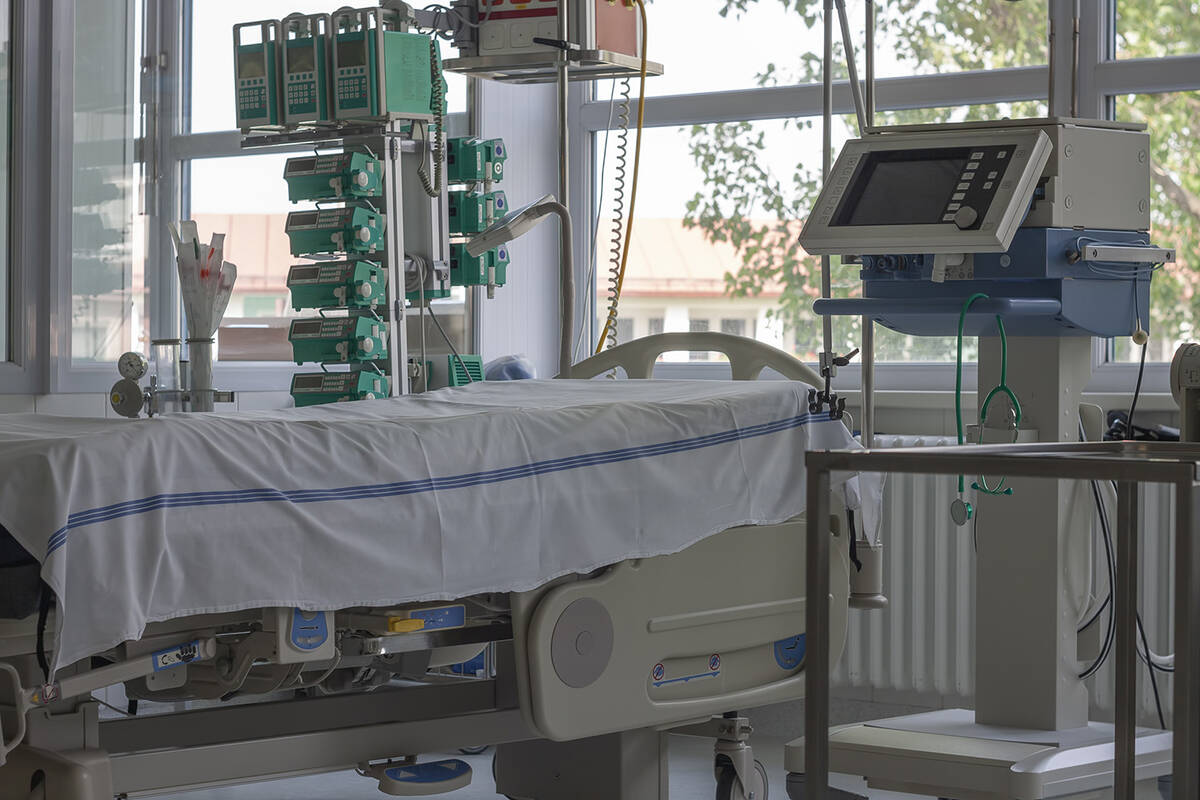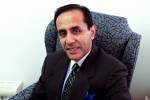Unvaccinated deaths, strained hospitals helped make last month one of COVID’s most lethal
February emerged as the fourth-deadliest month of the pandemic in Clark County, with the highest number of COVID-19 deaths reported since vaccinations became widely available, public health data shows.
There were 544 deaths reported last month, far fewer than the 893 reported in January 2021 at the height of last winter’s surge, the most ever reported in a single month, according to a Review-Journal analysis of data from the Southern Nevada Health District.
However, February’s figure comes close to the second- and third-highest tolls of 602 and 581 deaths reported in December 2020 and February 2021, respectively, when the vast majority of the community had yet to be vaccinated. It’s slightly higher than the 526 deaths reported in August at the peak of last summer’s delta surge.
February’s death toll during the omicron surge, which is associated with milder illness than the delta surge, speaks to the highly infectious nature of the latest dangerous coronavirus variant.
“When you infect 20,000 people instead of 2,000 people, you’re going to kill more people, even though the proportion of severity is lower, simply because you’re out there causing more infections,” said Dr. William Schaffner, an infectious disease expert at Vanderbilt University in Nashville, Tennessee.
Breakthrough cases
Omicron is “less severe than delta, but much more infectious and more likely to break through or escape previous immunity” from either vaccination or prior infection, said North Carolina State University professor Julie Swann, who analyzes pandemic data and trends.
Between Jan. 27 and Feb. 24, the health district reported 138 COVID-19 deaths in people who were fully vaccinated and 435 deaths — or 76 percent of fatalities — in people who were not vaccinated.
Among the breakthrough deaths, 78 percent — or 108 — were in people 65 and older. Twenty-seven were in those ages 50 to 64, and three in those ages 25 to 49. There were none in younger people.
“The proportion of vaccinated deaths — breakthroughs — is inching up,” Schaffner said.“That’s for two reasons. The first is that we’re slowly but surely vaccinating a larger proportion of the population,” which while reducing the risk of serious illness increases the proportion of breakthrough cases.
“But the other reason is that this virus will keep finding people who cannot respond optimally to the vaccine, particularly immunocompromised people.”
Underlying medical conditions
Among the 138 breakthrough deaths, as with overall deaths in February, most are listed as being in people without underlying medical conditions. Just 47 of the breakthrough deaths are listed as in people with underlying medical conditions, and 91 in people without known underlying medical conditions.
Cassius Lockett, director of disease surveillance and control for the health district, acknowledged that this statistic is misleading. In many instances, underlying health conditions do not get reported to the district during contact tracing and disease investigation. When it is unknown whether a person had underlying conditions, a death is listed in the category of no underlying conditions.
“A large chunk of the ‘no’ category is still unknown,” Lockett said.
Stressed hospitals
A factor that could have contributed to February’s high death toll is the strain hospitals have been under during the omicron wave. Swann said that when hospitals are at capacity, mortality rates tend to go up, though she knew of no particular study that looked at this correlation during the pandemic.
To supplement staffing and boost capacity, Southern Nevada hospitals have been relying on traveling nurses, who move about the country as needed. But unlike other waves of the coronavirus, which hit different regions of the country at different times, omicron struck the entire country in January and February, spreading traveling nurses even thinner, Swann said.
For the first time during the pandemic, the Nevada Hospital Association on Jan. 5 declared that staffing shortages were at crisis levels in Southern Nevada — a designation that continues to this day.
Both Swann and Schaffner said that nationwide, deaths in nursing homes have been rising, contributing to the death toll.
“Remember, there’s turnover of both the staff and the residents,” Swann said. “And so even if you vaccinated 70 percent of the nursing homes a year ago, that doesn’t mean that 70 percent of those residents today are vaccinated. And there are some nursing homes where that vaccination rate is lower.”
Deaths expected to decline
Although February proved to be a lethal month, authorities expect deaths to now decline in a sustained manner.
There may actually have been fewer COVID-19 deaths in February than there were in January, though the final tally is not yet known. Many deaths reported in February actually occurred in January, Lockett said, noting that it typically takes a week or longer for a death to be reported to the health district. Likewise, some deaths that will be reported this month will have occurred in February.
With numbers of cases and hospitalizations dropping, deaths aren’t far behind.
“We have to recognize that deaths are a lagging indicator, and they are usually the numbers that decline last,” Schaffner said. “First come the number of cases. Then come hospitalizations and intensive care unit admissions.
“And then, the last metric that begins to decline — as is happening around the country — are deaths.”
Contact Mary Hynes at mhynes@reviewjournal.com. Follow @MaryHynes1 on Twitter. Staff writer Michael Scott Davidson contributed to this report.

















































